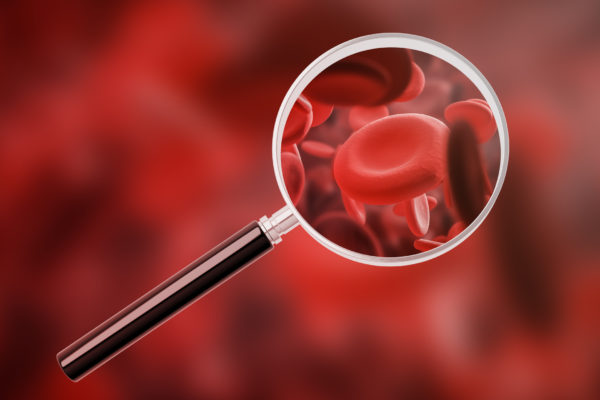
The phase III CADENZA study compared sutimlimab vs. placebo in patients with cold agglutinin disease (CAD) without a history of recent blood transfusion. In this setting, sutimlimab reduced haemolysis, anaemia, and fatigue, and was generally well tolerated. These data show that targeting the classical complement pathway at C1s represents a new, effective therapeutic approach for CAD management.
Cold agglutinin disease (CAD) is a rare type of autoimmune haemolytic anaemia characterised by chronic haemolysis that is entirely mediated by activation of the classical complement pathway. In CAD, activation of C1s (a C1 complex serine protease) leads to the cleavage of C3 into C3a and C3b. C3b deposition on erythrocytes results in extravascular haemolysis in the liver, the predominant mechanism of erythrocyte destruction in CAD. Patients with CAD may experience complement-mediated symptoms, including chronic haemolysis resulting in anaemia, profound fatigue, and jaundice. Non-complement-mediated symptoms include transient, cold-induced agglutination-mediated circulatory symptoms. Patients with CAD also have an increased risk of thromboembolism and early mortality. Sutimlimab is a first-in-class, humanised, monoclonal antibody designed to target C1s, which demonstrated a rapid and sustained therapeutic effect in patients with CAD with a recent history of blood transfusion in the pivotal phase III CARDINAL study. The CADENZA trial the first randomised, placebo-controlled phase III trial investigating the efficacy and safety of sutimlimab vs. placebo in patients with CAD without a history of recent blood transfusion.
This is a 26-week, double-blind (part A, completed) phase III trial, with an open-label extension period (part B, ongoing). Only the results of part A are here reported. Eligible patients had to have confirmed CAD diagnosis, ≥1 CAD symptoms (symptomatic disease), haemoglobin ≤10 g/dL, bilirubin level above the normal reference range and ferritin level above the lower limit of normal. Eligible patients were randomised 1:1 to receive 26 weeks of either sutimlimab (6.5 g if body weight was <75 kg and 7.5 g if body weight was ≥75 kg) or placebo on days 0 and 7, and every fourteen days thereafter through week 25. The primary efficacy endpoint was a composite of Hb increase from baseline of ≥1.5 g/dL at the treatment assessment timepoint (mean value from weeks 23, 25, and 26), absence of blood transfusions from week 5 to week 26, and avoidance of protocol-prohibited CAD medications from week 5 to week 26. Key secondary endpoints were mean change from baseline in Hb level at treatment assessment timepoint and in Functional Assessment of Chronic Illness Therapy (FACIT)-Fatigue Scale at treatment assessment timepoint. Mean change from baseline at treatment assessment timepoint for total bilirubin level was also a secondary endpoint.
In total, 42 patients were randomised to receive sutimlimab (N= 22) or placebo (N= 20). The prespecified criteria for the composite primary endpoint was met by 16 patients on sutimlimab and 3 patients on placebo (OR[95%CI]:15.9[2.9-88.0]; p< 0.001). At treatment assessment timepoint, 72.7% vs. 15.0% of the patients had an increase in Hb levels ≥1.5 g/dL from baseline. Of these patients, all sutimlimab-treated patients had increased Hb levels ≥2.0 g/dL from baseline vs. 10.0% on placebo. Sutimlimab treatment resulted in rapid (within three weeks) and sustained increase in Hb levels, whereas no meaningful change was observed with placebo. Hb level was maintained ≥11 g/dL from week 3 to treatment assessment timepoint with sutimlimab treatment. In total, 73.7 vs. 20% of patients achieved Hb level ≥11 g/dL in the sutimlimab and placebo groups. Sutimlimab treatment led to rapid (within 1-3 weeks) control of hemolysis that was sustained throughout the study. Mean total bilirubin was maintained at levels below the upper limit of normal to week 26. In total, 88.2 vs. 22.22% of the patients achieved normal total bilirubin levels in the sutimlimab and placebo arms. Sutimlimab also led to rapid (by week 1) and sustained improvements in FACIT-Fatigue scores. The least-squares (LS) mean score difference between the sutimlimab and placebo arms at treatment assessment timepoint was 8.9 points (10.8 vs. 1.9 points). These improvements correlated with near-complete inhibition of the classical complement pathway with sutimlimab (2.3% vs. 35.6% mean activity at week 1 in the sutimlimab and placebo arms, 3.2 vs. 29.3% at week 26) and C4 normalisation. In total, 96% vs. 100% of the patients experienced ≥1 treatment-emergent adverse event in the sutimlimab and placebo arms. Headache (22.7% vs. 10.0%), hypertension (22.7% vs. 0%), rhinitis (18.2% vs. 0%), Raynaud phenomenon (18.2% vs. 0%), and acrocyanosis (13.6% vs. 0%) were more frequent with sutimlimab vs. placebo, with a difference of ≥3 patients between groups. Three sutimlimab patients discontinued due to adverse events, while no placebo patients discontinued.
In the phase III CADENZA, sutimlimab reduced haemolysis, anaemia, and fatigue compared to placebo in patients with CAD without transfusion requirement. Sutimlimab treatment was generally well tolerated, with adverse events consistent with an older and medically complex patient population. These data show that targeting the classical complement pathway at C1s represents a new, effective therapeutic approach for CAD management, independent of transfusion status, with treatment responses as early as week one and a favourable tolerability profile.
Reference